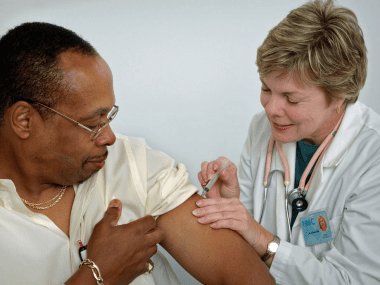
What Is Polio?
Polio is a highly contagious infectious disease caused by a virus that invades the nervous system. Poliovirus spreads through contact with the stool (feces) of an infected person or droplets from a sneeze or cough.
Burden
In the 1950s, before polio vaccines were available in the US, polio outbreaks caused more than 15,000 cases of paralysis each year. After polio vaccines were introduced in the US, the number of polio cases fell rapidly to less than 100 per year in the 1960s and fewer than 10 in the 1970s. In 2022, a case of paralytic polio and detection of poliovirus in wastewater in New York underscored the importance of routine polio vaccination.
Symptoms
Most individuals infected with the virus will not experience any symptoms at all; some individuals will experience minor symptoms such as fever, fatigue, nausea, headache, flu-like symptoms, stiffness in the neck and back, and pain in the limbs which often resolves completely.
In some people, the poliovirus can result in paralysis (usually the legs), which can lead to permanent disability. The poliovirus can cause death when it paralyzes the muscles that help people breathe.
About 1-5 out of 100 people who are infected with poliovirus infection will develop meningitis (an infection of the spinal cord or brain).
Prevention
Since widespread use of the vaccine, which began in the 1950s, polio has been eliminated in the US. However, the virus continues to circulate in different parts of the world, which is why polio vaccination is recommended for all children.
Children should receive 4 doses total of polio vaccine, with 1 dose at each of the following ages:
- 2 months
- 4 months
- 6-18 months
- 4-6 years
Most US adults were vaccinated as children and do not need further vaccine doses. Adults age 18 years and older who are unvaccinated or unsure of their vaccination status should complete a primary polio vaccination series with inactivated polio vaccine (IPV) as soon as possible.
Fully vaccinated adults at increased risk for poliovirus exposure (e.g., those traveling to countries where there is an increased risk) may receive a single lifetime booster dose of IPV.
Treatment
There is no cure for paralytic polio and no specific treatment. Physical or occupational therapy can help with arm or leg weakness caused by polio.
Reviewed January 2024
Source: Centers for Disease Control and Prevention
Related Resources

Updates from June 2024 Advisory Committee on Immunization Practices (ACIP) Meeting
In this recorded webinar, speakers discuss updates from the June 2024 Advisory Committee on Immunization Practices (ACIP) meeting, focused on US vaccination recommendations for children, adolescents, and adults …
Related Posts
5 Summer Travel Vaccination Tips for Adults
Are you planning an overseas vacation this summer? Depending on the destination, you may need to think about recommended vaccines for you and your kids.…

Five Important Reasons to Vaccinate Your Child
The Centers for Disease Control and Prevention (CDC) has designated April 26-May 3, 2014 as National Infant Immunization Week (NIIW), an annual observance highlighting the importance of protecting…

ID News Round-Up
Recent items of interest from the world of vaccine-preventable diseases: 1. The Advisory Committee on Immunization Practices (ACIP) met on October 23-24, 2013 to discuss…
